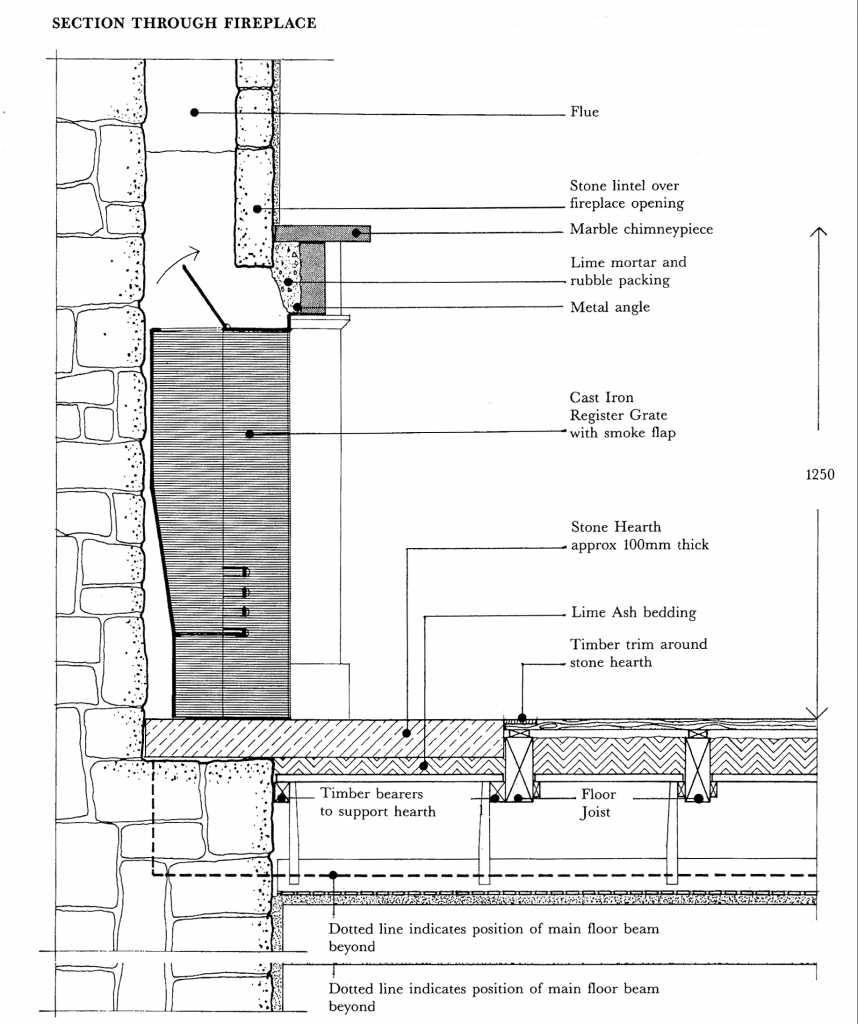Why Important
Smoking chimneys were a problem in some old houses with dog grates or firebaskets, large openings and wide flues.
What to look for
Fires can destroy parging, crack masonry and ignite built-in timbers. These risks can be reduced if the chimney is effectively lined. Sometimes a flue is blocked by a bird’s nest or by stones from a broken bridge between flues, and professional advice will be required.
It may be possible to locate the obstruction with a miniature TV camera lowered down inside the chimney; once located, the flue should be opened for cleaning and further inspection.
When to look
Flues should be swept once a year, at the end of the heating season; accumulated soot is a fire hazard, made worse if coal and wood are burned together, leaving an inflammable, tarry deposit in the flue.
How to fix
 The fire, being raised high above the hearth, did not heat the air at floor level, and the wide flue opening created down-draughts which blew smoke back into the room.
The fire, being raised high above the hearth, did not heat the air at floor level, and the wide flue opening created down-draughts which blew smoke back into the room.
Technical improvements, devised by Count Rumford in 1797, were introduced gradually during the nineteenth century. The width of the opening is reduced, the fireback brought forward, the sides splayed and the throating reduced in width, these principles are illustrated in the plan and section of a modern fireplace.
Other remedies are to raise the base of the fire, fit a canopy, raise the chimney or fit a higher can, and to improve the air supply by fitting ventilators above the door of the room or, if the floor is ventilated, in the floorboards near the hearth.
The flue-gathering should be smoothly tapered into the throat; recommended sizes are 100 mm wide x 200-250 mm long and 150-200 mm wide.
Avoiding creating problems
Do not block the flue.
Historical background
Count Rumford suggested that the fire would burn better if the width of the opening was reduced, the fireback brought forward, the sides splayed and the throating reduced in width, these principles are illustrated in the plan and section of a modern fireplace, which should be compared with a typical Hamilton Square fireplace.
